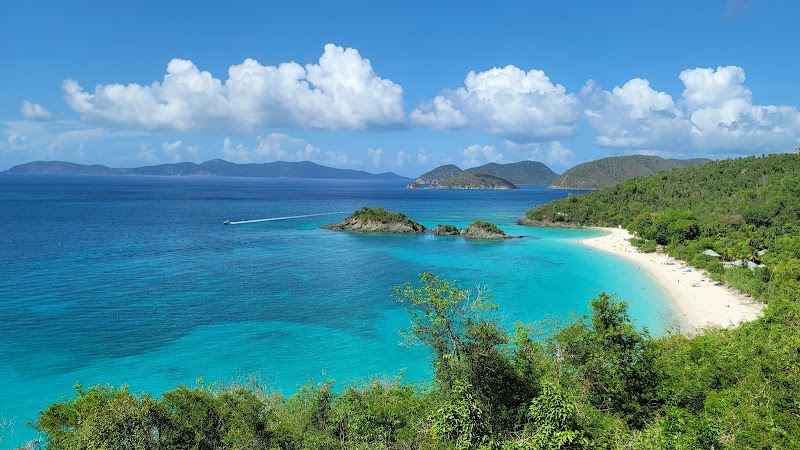Top Hiking Trails Near St. John: Exploring Virgin Islands' Forests and Coastal Views
St. John’s hiking trails offer a diverse range of terrains that invite both casual walkers and seasoned hikers to explore the island’s rich forests and breathtaking coastal cliffs. From easy loops to steep climbs, discover routes that combine natural beauty with practical challenges you can plan for.
Start Early to Beat the Heat
Temperatures rise quickly on St. John, especially on exposed coastal trails. Begin hikes early morning to avoid midday sun and enjoy cooler, calmer conditions.
Wear Sturdy Footwear
Trails range from rocky to root-laden forest floors that demand good traction and ankle support; avoid sandals or flip-flops to prevent injuries.
Hydrate Generously
Carry at least two liters of water per person, as fresh water sources along trails are scarce, and humidity accelerates dehydration.
Respect the Wildlife
Iguanas and tropical birds are common but unpredictable; observe quietly and keep a safe distance to avoid startling them.
Top Hiking Trails Near St. John: Exploring Virgin Islands' Forests and Coastal Views
St. John, Virgin Islands, offers an outdoor playground where lush forests and rugged coastlines engage hikers with a blend of challenge and reward. Trails here shift between dense maritime forests, daring rocky ridges, and panoramic overlooks of turquoise seas that both beckon and test your stamina. Prepare for climbs where roots grab at your boots and breezes push you forward, revealing vistas fiercely carved by wind and water.
Start with the Reef Bay Trail, a 2.7-mile trek descending 600 feet through tropical hardwoods and ancient petroglyphs. The terrain is uneven and rocky, demanding solid footwear and steady pace. This trail culminates at a secluded beach where the waves invite a refreshing break, making hydration crucial. Early morning or late afternoon hikes offer cooler temperatures and softer light, ideal both for comfort and photography.
For a coastal vantage, the Lind Point Trail offers a shorter, easier 1.6-mile loop with moderate elevation gain. As you walk, scrub oaks and gumbo limbo trees shade the path, while the Caribbean Sea flashes blue through breaks in the canopy. Keep eyes peeled for iguanas sunning on rocky ledges, ready to dart away at the slightest movement.
At the more challenging end, the Ram Head Trail commands respect. Compact but steep, this 1.8-mile round trip packs a punch with a rocky, uneven surface and sharp inclines reaching approximately 300 feet above sea level. The reward is a cliff-side panorama of crashing waves and the distant silhouette of neighboring islands. The trail surface demands attentive footing, making trekking poles useful. Midday heat intensifies here, so plan an early start to avoid the sun’s fierceness.
Know your limits. Trails can feel isolated; prepare with at least two liters of water, sun protection, and a map or GPS. The Virgin Islands' forests have a quiet confidence, not to be rushed or underestimated. Every step puts you deeper into their pulse, where nature dares you to keep up but also rewards with unforgettable views and a tangible connection to this island’s wild heart.
Practical preparedness combines with the spirit of adventure here. Footwear with grip, sun-smart clothing, and mindful pacing transform these hikes from just another outing into a moving conversation with the land. Choose your trail with care, respect the environment, and let the forests and coastlines around St. John engage you fully, step by step.
Nearby Trips
All Adventures
Boat Charters
Water Activities
Adventures near Cruz Bay
Discover the unique and memorable adventures that make Cruz Bay special.
Frequently Asked Questions
Are pets allowed on St. John hiking trails?
Pets are generally not permitted within Virgin Islands National Park, which covers most trails on St. John. This protects native wildlife and plants from disturbance.
Can you swim at the end of the Reef Bay Trail?
Yes, the trail ends at a beach where swimming is possible, though currents can be strong. Always assess water conditions and stay within safe zones.
What wildlife might I encounter on these hikes?
Common sightings include native iguanas, tropical birds such as Zenaida doves, and occasional hermit crabs along coastal paths. Keep your distance to avoid disrupting them.
Is there cell phone coverage on these trails?
Cell reception is patchy; it’s best not to rely on phones for navigation or emergency calls. Carry a physical map or download offline GPS data beforehand.
Are hiking permits required on St. John’s trails?
No permits are needed for most Virgin Islands National Park trails, but fees may apply for certain guided activities or park entrances by vehicle.
What is the best time of day for photography on the trails?
Morning light brings soft illumination in forest paths, while late afternoon enhances coastal overlooks with warm hues and shadows.
Recommended Gear
Trail Shoes with Good Traction
Protects ankles and ensures stability on rocky, uneven terrain common on St. John’s trails.
Reusable Water Bottle or Hydration Pack
Hydration is critical in tropical heat; carry sufficient water to avoid dehydration.
Lightweight Sun Hat
Shields face and neck from intense UV rays during exposed sections of coastal trails.
Compact First Aid Kit
Useful for handling scrapes, insect bites, or minor injuries on remote paths.
Local Insights
Hidden Gems
- "Cinnamon Bay overlook – a lesser-known high point with sweeping island views"
- "Petroglyph sites along Reef Bay Trail providing a glimpse of ancient island heritage"
Wildlife
- "St. John’s native rock iguanas, a unique reptile species locally treasured"
- "Brightly colored tropical birds that animate early mornings"
History
"Many trails cross lands once inhabited by the Taino people, with visible petroglyphs and stone ruins bearing witness to centuries of human story intertwined with nature."

